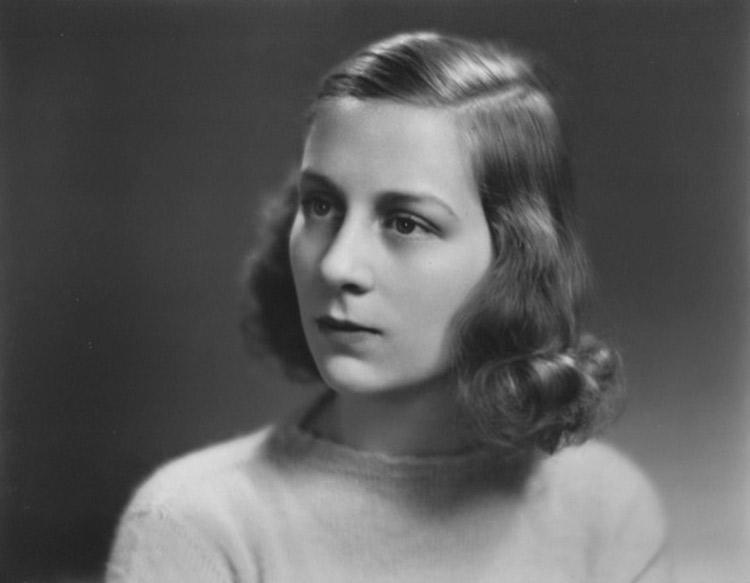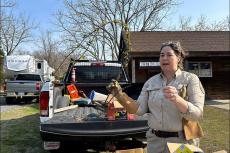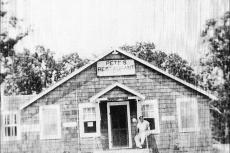Gladys Whitridge Collier, a national duplicate bridge champion who twice represented the United States at the World Bridge Championships and was one of the top players on Long Island and in the country, died at home in East Hampton on June 27. She was 101.
“Gladys had a brilliant mathematic mind and was very tough at the table,” her frequent partner at regional and national championship competitions, Alan Sontag, recalled in obituary materials written by her daughter Lisa Collier Cool. “She approached each hand as a puzzle to be solved.”
“Indeed, she was so proficient at doing so that her ingenious card play was frequently featured by Alan Truscott in The New York Times bridge column,” Ms. Cool wrote.
Born on May 24, 1922, in Baltimore, the only child of William Whitridge, an investment banker, and the former Mary Louise Pern, a trustee of Johns Hopkins Children’s Hospital, she “showed her championship mettle early in life,” her daughter wrote. At age 9, she was thrown from a horse while attending the Garrison Forest School and developed a near-fatal bone infection.
“A series of surgeries left her with weak, heavily scarred, and chronically painful legs of uneven lengths, but through sheer determination, she regained the ability to walk — and even danced at her debutante ball several years later,” Ms. Cool wrote.
She had a “razor-sharp” mind, and on D-Day in 1944 graduated magna cum laude from Bryn Mawr College in Pennsylvania and went on to become one of the few women of her era to earn a master’s degree in mathematics and chemistry from Columbia University in 1949.
She “was strong-willed and statuesque, with a striking resemblance to the actress Greta Garbo,” according to Ms. Cool. “She deemed it a great compliment when one of her admirers described her as ‘sui generis’ — and proved him right with her long life of singular achievements.”
In 1949, “the Baltimore debutante shocked her socially prominent parents by eloping with Oscar Collier, then a penniless artist living in a Greenwich Village walkup,” Ms. Cool said.
In the 1950s they had two daughters, Lisa and Sophia, and moved to East Hampton, where they built a large house and artist’s studio near Georgica Pond.
“It was there that Gladys discovered her bridge prowess,” Ms. Cool said. In 1961, after many victories in local and then statewide and regional tournaments, she was among the first players from Long Island to attain life master status, a rank that requires winning 500 masterpoints of various types.
During her marriage, which ended in divorce in 1970, “Gladys moved effortlessly between very different worlds,” Ms. Cool said. “With her elegant manners, sometimes biting wit, and a decidedly unconventional streak, she was equally at home eating lobster with the socialites at East Hampton’s exclusive Maidstone Club, of which she and Oscar were members, as she was drinking cheap wine out of jelly glasses with the couple’s large circle of bohemian friends, which included Jackson Pollock and other well-known Abstract Expressionist painters.”
While her disability often caused severe pain, Mrs. Collier nevertheless traveled extensively to compete in leading bridge tournaments in this country and abroad, always pushing herself to excel and improve. In 1969, she won so many masterpoints that she qualified to be on the four-member team (including Mr. Sontag) that represented her country in the 1970 World Bridge Championships in Stockholm.
She and her partner, Karen Allison, reached the finals in the women’s pairs, where they were pitted against the top two women players in the world. They lost “by the narrowest of margins,” her daughter wrote.
Her passion for the game never dulled.
She taught the fundamentals of bridge at Guild Hall in the 1970s and later at her house here, always in her trademark white sweater with a deck of cards embroidered on the front. She also played regularly at the East Hampton Town Senior Citizens Center, at the Water Mill Bridge Club, and in New York at the Cavendish Club and the Regency Club.
She represented the U.S. in the World Bridge Championships in 1970 and 1990, and won the 1989 U.S. Master Mixed Team National Championships, which qualified her and her teammates to represent this country in the 1990 World Championships in Geneva and also meant she was eligible to become a grand life master, awarded only to players who win at least one national championship and also accumulate 10,000 or more masterpoints.
By this time she often needed to use a wheelchair when traveling to tournaments, but despite the challenges she continued to rack up victories and in 2005 was named a diamond life master of the year by the American Contract Bridge League, a ranking awarded to those with at least 5,000 masterpoints.
“Over the next decade, as Gladys began to struggle with memory problems, she continued to inch ever closer to her goal,” Ms. Cool wrote. “Even as her dementia progressed to a point where she was unable to compete in national or regional events, she continued to play — and win — in small, local games that only awarded fractional masterpoints. Ultimately, these small victories added up. By the time she retired from bridge in her mid-90s, she had crossed the finish line to grand life master with 10,001 masterpoints.”
In 2018, she was ranked as one of the Nassau-Suffolk Bridge Association’s top masterpoint winners of the year.
She is survived by Ms. Cool and her husband, John Post Cool, who live in Orient, and by her other daughter, Sophia Whitridge Collier, and her wife, Katherine (Chula) Reynolds, of Sausalito, Calif. She leaves four grandchildren, Alison Collier Cool, Georgia Collier Cool, Rosalie Collier Cool, and Makonnen Collier, and three great-grandchildren. A private funeral was held on July 1 at Cedar Lawn Cemetery in East Hampton.
Her family has suggested contributions to the East Hampton Town Senior Citizens Center, 128 Springs-Fireplace Road, East Hampton 11937.




